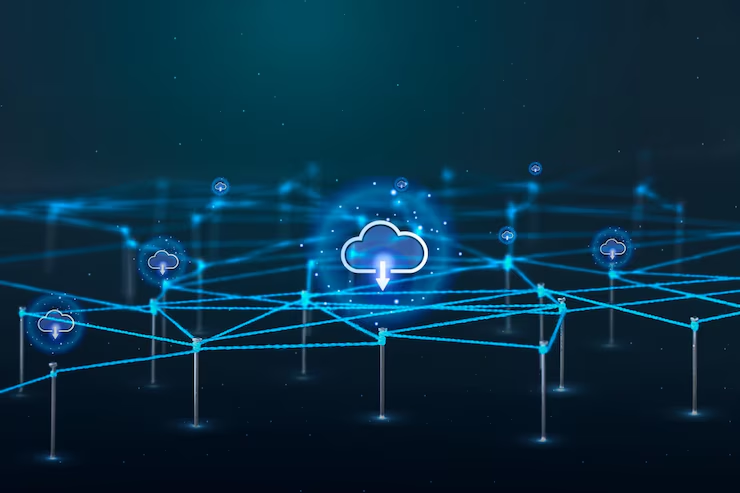
The Evolution of Cybersecurity
Cybersecurity refers to the practice of protecting systems, networks, and programs from digital attacks. These cyberattacks are usually aimed at accessing, changing, or destroying sensitive information, extorting money from users, or interrupting normal business processes. Implementing effective cybersecurity measures is particularly challenging today because there are more devices than people, and attackers are becoming more innovative.
The Importance of Cybersecurity
In today’s digital age, cybersecurity is crucial for several reasons:
- Protecting Sensitive Data: Cybersecurity helps safeguard personal, financial, and corporate data from unauthorized access and breaches.
- Ensuring Business Continuity: Effective cybersecurity measures prevent disruptions in business operations caused by cyberattacks.
- Maintaining Trust: Organizations that protect their data effectively maintain trust and credibility with their customers, partners, and stakeholders.
- Compliance and Regulation: Many industries are required to adhere to strict data protection regulations. Cybersecurity ensures compliance with these laws, avoiding legal penalties.
Best Practices for Data Breach Prevention
Implementing Strong Password Policies
One of the simplest yet most effective cybersecurity practices is enforcing strong password policies:
- Complexity: Ensure passwords are complex, including a mix of letters, numbers, and special characters.
- Length: Require passwords to be at least 12 characters long.
- Regular Updates: Enforce regular password changes, at least every 90 days.
- Avoid Reuse: Prohibit the reuse of old passwords.
Using Multi-Factor Authentication (MFA)
Multi-factor authentication (MFA) adds an extra layer of security by requiring users to provide two or more verification factors:
- Something You Know: This could be a password or PIN.
- Something You Have: This might be a smartphone or hardware token.
- Something You Are: This could be biometric verification, such as fingerprints or facial recognition.
MFA significantly reduces the risk of unauthorized access even if passwords are compromised.
Regular Software Updates and Patch Management
Keeping software up to date is critical for cybersecurity:
- Automatic Updates: Enable automatic updates for operating systems and applications to ensure they receive the latest security patches.
- Patch Management: Regularly review and apply patches for all software to close vulnerabilities that could be exploited by attackers.
Educating Employees on Cybersecurity
Human error is often a significant factor in data breaches. Educating employees on cybersecurity best practices can help mitigate this risk:
- Phishing Awareness: Train employees to recognize phishing emails and avoid clicking on suspicious links or attachments.
- Secure Communication: Encourage the use of secure communication channels for sharing sensitive information.
- Incident Reporting: Establish a clear protocol for reporting potential security incidents promptly.

Utilizing Encryption
Encryption is the process of converting data into a code to prevent unauthorized access:
- Data at Rest: Encrypt sensitive data stored on devices and servers.
- Data in Transit: Use encryption protocols, such as SSL/TLS, to protect data being transmitted over networks.
- End-to-End Encryption: Implement end-to-end encryption for communications to ensure that only the intended recipients can read the messages.
Conducting Regular Security Audits
Regular security audits help identify and address vulnerabilities:
- Internal Audits: Conduct internal audits to review security policies, procedures, and systems.
- External Audits: Hire third-party security experts to perform comprehensive security assessments and penetration testing.
- Continuous Monitoring: Implement continuous monitoring tools to detect and respond to security threats in real-time.
The Future of Cybersecurity
Emerging Cybersecurity Trends
As technology evolves, so do the methods used by cybercriminals. Keeping up with emerging trends is essential for effective cybersecurity:
- Artificial Intelligence (AI) and Machine Learning (ML): AI and ML are being used to enhance cybersecurity measures by detecting and responding to threats more quickly and accurately.
- Zero Trust Architecture: Zero trust is a security model that requires strict identity verification for every person and device trying to access resources on a private network.
- Quantum Computing: While still in its early stages, quantum computing poses potential challenges for cybersecurity, particularly in terms of breaking traditional encryption methods. Researchers are working on developing quantum-resistant encryption algorithms.
The Role of Governments and Regulations
Governments and regulatory bodies play a crucial role in enhancing cybersecurity:
- Legislation: Implementing and enforcing cybersecurity laws and regulations to protect citizens and businesses.
- Collaboration: Encouraging collaboration between public and private sectors to share threat intelligence and best practices.
- Funding: Providing funding and resources for cybersecurity research and development.
Cybersecurity in the Age of IoT
The proliferation of Internet of Things (IoT) devices presents new cybersecurity challenges:
- Device Security: Ensuring that IoT devices have built-in security features and are regularly updated with security patches.
- Network Segmentation: Implementing network segmentation to isolate IoT devices from critical systems and data.
- Data Privacy: Ensuring that IoT devices adhere to data privacy regulations and best practices.
Conclusion
The evolution of cybersecurity is a continuous process that requires vigilance, innovation, and collaboration. Implementing best practices for data breach prevention, such as strong password policies, multi-factor authentication, regular software updates, employee education, encryption, and security audits, can significantly enhance an organization’s security posture. As technology advances and new threats emerge, staying informed about cybersecurity trends and adapting to new challenges will be crucial in protecting sensitive information and maintaining trust in the digital age. Governments, regulatory bodies, and the private sector must work together to develop robust cybersecurity frameworks and foster a culture of security awareness.
